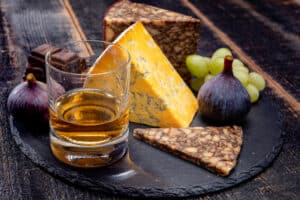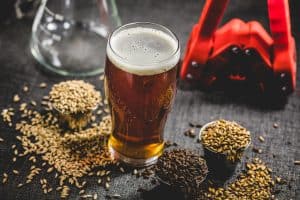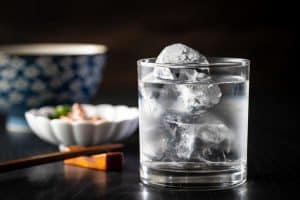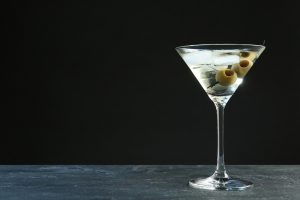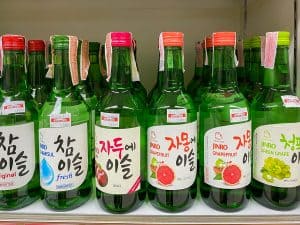
When we mention France, you probably immediately think of fresh cheese, baguettes, full-bodied Bordeaux Cabernet Sauvignon, or smooth Burgundian Pinot Noirs to wash it down. Or you may think of Cognac and Armagnac as after-dinner drinks.
In both cases, you are perfectly right. But what does one do when the weather doesn’t allow you to grow grapes and produce famous wines—you turn your attention to other solutions. In Normandy, they do just that—they make Calvados—an apple brandy native to the region.
Calvados can be enjoyed in various ways. Trou Normand means serving, and sipping on Canard refers to soaking a sugar cube in Calvados before eating it. Calvados can also be added to coffee to elevate it to a stylish coffee. Calvados can be served with various foods, from seafood to poultry and roasted red and white meats.
First, we’ll look at where Calvados originated and move on to the various age expressions. We’ll delve into how you can enjoy Calvados and offer suggestions for glassware. Lastly, we’ll look at the food pairings you can serve with Calvados.
Opening a Bottle of Calvados
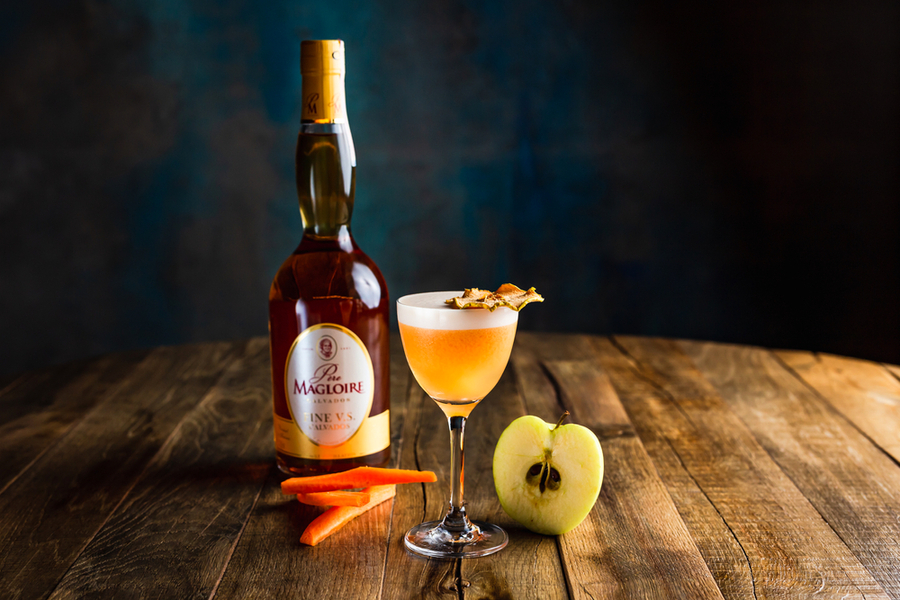
Calvados bottles are usually sealed with a wax seal on the stopper. On older bottles, the seal can harden with time, but most often, the wax seal is not the ‘easy peel’ type you’ll find on designer liqueur or spirits.
To break the hard wax seal, all you have to do is tap the seal with the handle of a heavy knife. You’ll have to estimate where the stopper meets the bottle’s opening and insert the knife’s blunt edge to chip away the wax seal. Be mindful of shards flying and protect your eyes against those shards.
Now that you’ve got your bottle open let’s dive into how you can drink Calvados.
How To Drink Calvados
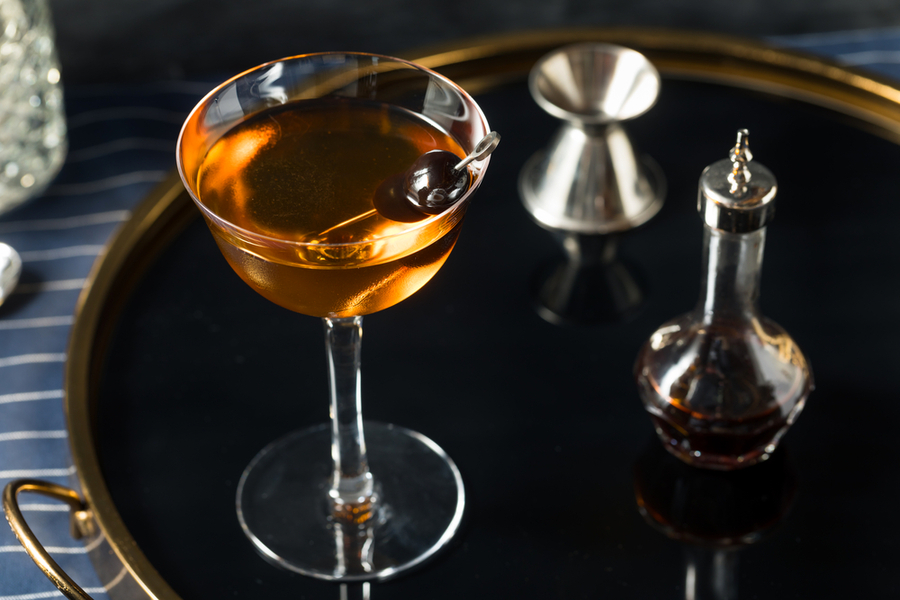
While there is no right or wrong way to drink a particular drink or spirit, there are some guidelines you should follow to heighten the experience.
Calvados is usually served at room temperature and consumed as a digestif, but sometimes it is also an apératif. Unlike whiskey or brandy, Calvados is best not chilled because they would not evaporate and release the aromatic compounds.
Occasionally Calvados may be served over ice; however, you’ll risk over-chilling the spirit and diluting it too much without being able to control the chilling or dilution. An alternative would be to use a dropper and add water drop-by-drop until you reach your desired strength.
Bartenders tend to avoid Calvados because it is challenging to mix into cocktails, like cognac, but it needs to be understood. Try some cocktails to bring Calvados to its full potential.
Besides cocktails, let’s look at traditional ways to drink Calvados like a true connoisseur.
Trou Norman, or Norman Hole
Trou Normand was initially known as coup du milieu (‘quick drink in the middle of the meal’). The Trou Normand is a traditional way of consuming Calvados—a small drink of Calvados is served between the courses of a large meal.
The purpose is to clean the palate, revive the appetite, and aid digestion. Sometimes Trou Normand is filled with apple sorbet, but a more modern practice is to forgo the Calvados altogether and only serve the apple sorbet.
This practice is typically followed when two meat dishes are served quickly after each other.
Canard
Canard is French for ‘duck,’ but the practice has nothing to do with ducks or serving duck. The approach of Canard is as follows: a cube of sugar is dipped in a glass of Calvados—once the sugar is saturated with the spirit, and is simply eaten.
Canard isn’t restricted to Calvados; it is a common practice for coffee too. The practice is rare today, but a canard was often given to children to help them develop a taste for coffee or to reap the medicinal benefits Calvados is claimed to have.
Sometimes, a cube of sugar does help the medicine go down.
Calva Cafè
Towards the end of the nineteenth century, farmers and workers would add a drop of Calvados to their morning cup of Joe to get warm (and the strength) for a hard day’s work ahead of them. This tradition became popular among the French population.
Other names for a cafè calva include cafaé coueffi, meaning ‘groomed coffee’ or cafaé arousaé or ‘watered coffee.’ Alternatively, a young shot of Calvados is served alongside the coffee, and the spirit is added instead of sugar.
Every time a sip of coffee is taken, it is topped up with Calvados. Finally, the last bit of Calvados is used to rinse out the empty coffee cup, and it’s knocked back as a shot.
Glassware To Serve Calvados
Calvados started as a humble peasant’s drink, so there wasn’t emphasis on developing glassware to serve the drink; when Calvados began to gain a reputation as being more than just a peasant drink, drinking customs, like those we discussed above, also started to emerge.
Calvados is enjoyed in a shot glass with a tulip shape or sometimes in a sizeable balloon-shaped brandy snifter—the same way as cognac and brandy.
Instead, skirt tradition and avoid using a brandy snifter because it will accentuate and concentrate the harsh alcoholic vapors in the glass. The key is to have a glass to keep the aromas in the glass.
Serious drinkers opt for long-stemmed tulip glass because it offers the opportunity to control the spirit’s temperature and allow the drinker to enjoy the drink’s unique flavor and aromas.
Food Pairings That Go With Calvados

A VSOP can be enjoyed with foie gras and Normandy cheeses, whose creamy texture softens the Calvados’ acidity and brings out their fruity character. Calvados also pairs well with roast chicken or chicken served in a sauce.
Other recipes you can serve with Calvados include:
- Pan-fried mushrooms served alongside a creamy veal escalope
- Roast pork served with apples
- Salt-crusted leg of lamb
- Honey glazed duck.
Normandy borders the sea; thus, seafood is a perfect option too. Think sea scallops; a special treat is Chausey blue lobster or flabéed prawns. Trout and almonds are other terrific options if you prefer freshwater fish.
Dessert
Dessert and Calvados are a match made in heaven—fruit tarts are sweet yet slightly tart, which complements the Calvados’ taste. A personal favorite of mine is tarte tatin (here’s the real Julia Child offering two recipes!).
Tiramisu and chocolate-based cakes will also accompany the spirit perfectly (for an extra-indulgent option, try this cheesecake offering creaminess and chocolate).
If you feel lazy or just want to keep it simple, serve Calvados with sliced fruits like apples and pears, but peaches, apricots, prunes, and grapes, along with Normandy cheeses, are also beautiful accompaniments.
How Did Calvados Originate?
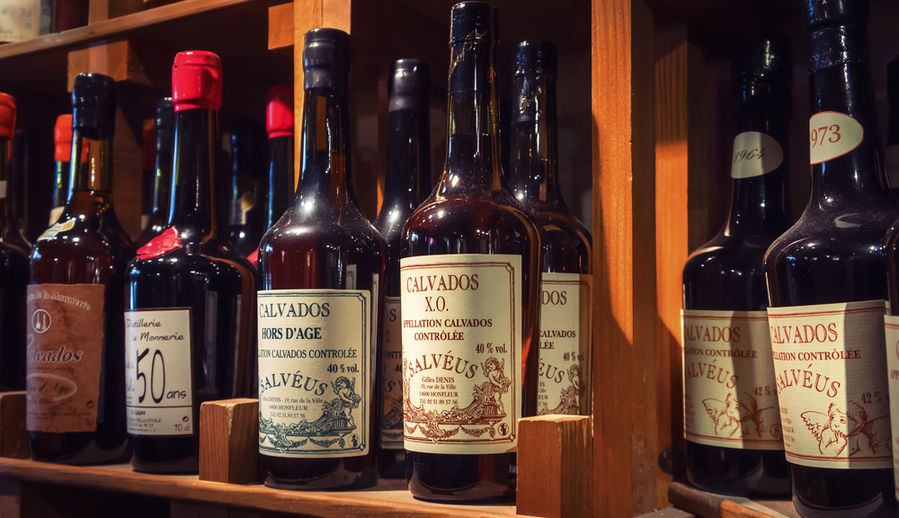
Calvados, or calva, as it’s lovingly known among the people of Normandy, traces its history back four centuries.
Gilles Picot, Lord de Gouberville, mentions the drink in a document dating back to 1553. In 1603 a guild was established to regulate the distillation of cider. The phylloxera crisis of the late nineteenth century nearly wiped all of France’s famed vineyards out.
Calvados became increasingly popular when the French turned their attention to Normandy’s eau-de-vie style brandy. During WWII, Calvados received an AOC (Appellation d’origine contrôlée) designation in 1942, which strengthened Calvados’ image locally and internationally.
The AOC appellation protected Calvados against the Nazis stealing or appropriating the product. You can read more about the fascinating history of Calvados here.
While Calvados follows the same distillation methods as other well-known brandies like Armagnac and Cognac, it uses completely different ingredients.
Calvados Age Expressions
Much like cognac and Armagnac, Calvados uses a slightly different yet similar age classification system to identify age expressions:
- Two years of aging results in a Fine expression. Producers may also opt for three stars or three apples to indicate a Fine expression.
- Three years in the casks results in Vieux or Réserve, or sometimes Old can also be used.
- Four years will give producers a V.S.O.P. (Very Special/Superior Old Pale), expressed as Vieille Réserve.
- Six years in the casks is presented as one of the following age expressions: X.O. (Extra Old), Très Vieille Réserve, Très Vieux, Hors d’Âge, or Extra. Napoléon is used for Calvados aged for at least six years. In the world of cognac, Napoléon and X.O. indicate a cognac blended with eau de vie that is not younger than six or ten years, respectively.
- The outsider is Millésime—using fruits from the same year and blended in a single vintage end-product, much like Armagnac (this practice is unheard of regarding cognac).
The age expressions above refer to the youngest batch used in the blend.
Conclusion
Calvados is a unique Normandian spirit made from a select few types of apples (and pears) in the same style as cognac or Armagnac.
Calvados can be served in many ways, such as an apératif, blended into cocktails, added to coffee, between the courses of a relaxed meal, or as a digestif.
Calvados also pairs perfectly with poultry, freshwater fish such as trout, seafood dishes, and red and white meat.
A well-made bottle of Calvados will taste like apples and pairs balanced with oak-aged flavors. A young bottle of Calvados will have fresh apple and pear aromas.
Treat yourself to a bottle of Calvados and discover a world of apple flavors that can be paired with many dishes.



